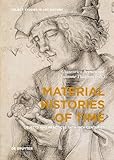Material Histories of Time : Objects and Practices, 14th-19th Centuries / ed. by Susanne Thürigen, Gianenrico Bernasconi.
Material type: TextSeries: Object Studies in Art History ; 3Publisher: Berlin ; Boston : De Gruyter, [2020]Copyright date: ©2020Description: 1 online resource (226 p.)Content type:
TextSeries: Object Studies in Art History ; 3Publisher: Berlin ; Boston : De Gruyter, [2020]Copyright date: ©2020Description: 1 online resource (226 p.)Content type: - 9783110622133
- 9783110625035
- online - DeGruyter
- Issued also in print.
| Item type | Current library | Call number | URL | Status | Notes | Barcode | |
|---|---|---|---|---|---|---|---|
 eBook
eBook
|
Biblioteca "Angelicum" Pont. Univ. S.Tommaso d'Aquino Nuvola online | online - DeGruyter (Browse shelf(Opens below)) | Online access | Not for loan (Accesso limitato) | Accesso per gli utenti autorizzati / Access for authorized users | (dgr)9783110625035 |
Frontmatter -- Contents -- Introduction -- Musique et Jouvence au royaume de France. Le Roman de Fauvel et la fontaine de Cleveland (Paris, vers 1320) -- Designing a Model of the Cosmos. Theoretical and Visual Considerations Concerning the Construction of Astronomical Clocks through Early Modern Times -- The 16th-century Astronomical Clock of the National Maritime Museum of Greenwich. Cultural and Sensorial Analysis -- Clocks, Clock Time and Time Consciousness in the Visual Arts. William Hogarth’s Modern Moral Subjects -- De l’acquisition au réglage. L’horlogerie parisienne du xviiie siècle et ses usages -- Time Technologies. Londoners and Their Timepieces (1775–1825) -- La montre et l’odomètre. À propos de l’Itinéraire des routes les plus fréquentées de Louis Dutens (1775) -- Les montres de voyage. Désignations, techniques et usages (1700–1830) -- Les voyageurs et leurs montres en Europe à la fin du xviiie siècle. Entre précision technique et flou temporel -- Time Management at School from the Late Middle Ages to the Industrial Age. A Few Cases in Point -- Temps et cuisine, xviie–xviiie siècles. Remarques sur les pratiques de transformation alimentaire -- Clocks and Timekeeping in Lavoisier’s Experiments on Animal Respiration. The Chemical Revolution, Its Material Culture and Taken-for-Granted Knowledge -- Broken Watches. Sources and Methods for the Study of Time Consciousness -- The First Black Forest Clock. How a Fake Impacted Our Notion of Clock History -- Picture Credits
restricted access online access with authorization star
http://purl.org/coar/access_right/c_16ec
Die Forschungsgeschichte der Zeit wird traditionell von einer Trennung zwischen technikhistorischen Ansätzen, welche die Entwicklung der Zeitmessung nachzeichnen, und sozial- und kulurhistorischen Ansätzen, die sich etwa mit Fragen nach dem Zeitbewusstsein oder gesellschaftlicher Synchronisierung und Disziplinierung beschäftigen, bestimmt. "Material Histories of Time" eröffnet einen Dialog zwischen beiden Zugängen. Ausgehend von den Objekten wie zum Beispiel Monumental-, Tisch- und tragbare Uhren sowie Kutschenuhren werden Praktiken der Zeitmessung und -erfahrung untersucht. Die Beiträge reichen von den Anfängen der mechanischen Zeitmessumg im Mittelalter bis zur Industrialisierung im 18. und 19. Jahrhundert.
The historiography of timekeeping is traditionally characterized by a dichotomy between research that investigates the evolution of technical devices on the one hand, and research that is concerned with the examination of the cultures and uses of time on the other hand. Material Histories of Time opens a dialogue between these two approaches by taking monumental clocks, table clocks, portable watches, carriage clocks, and other forms of timekeeping as the starting point of a joint reflection of specialists of the history of horology together with scholars studying the social and cultural history of time. The contributions range from the apparition of the first timekeeping mechanical systems in the Middle Ages to the first evidence of industrialization in the 18th and 19th centuries.
Issued also in print.
Mode of access: Internet via World Wide Web.
In English.
Description based on online resource; title from PDF title page (publisher's Web site, viewed 28. Feb 2023)


